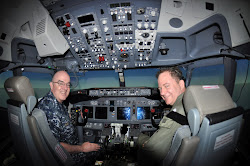This entry is my final post on the U.S. Fleet Forces Command blog. As many of you are aware, I will turn over command of U.S. Fleet Forces on 14 September 2012 to ADM Bill Gortney and then officially retire from the Navy.
Before I leave my current position I want to take a moment to say “thank you” to everyone who followed this blog and took the time to contribute to the discussion. Your feedback has been very useful to me over the past three years and I believe that we’ve made some very positive changes for our Sailors in the Fleet.
As for the future of this blog, I intend to leave it up (for reference), but it will be completely inactive and unmonitored. I’ll be updating the “About” page before I leave to reflect the blog’s new status.
I have one final recommendation for you and it has to do with suggested professional reading. In the Spring 2012 Naval War College Review are two exceptional articles well worth your time.
The first article is by Professor Mackubin Owens and is entitled “What Military Officers Need to Know about Civil-Military Relations.” I am deeply concerned about the direction our civil-military relations have taken over the past few years and this superb article highlights many of the issues that have impacted those relations.
At the end of the day it’s all about trust – as Owens writes, “The state of post-9/11 American civil-military relations also points to the issue of trust—the mutual respect and understanding between civilian and military leaders and the exchange of candid views and perspectives between the two parties as part of the decision-making process.” This is an important article on an incredibly important topic, please read it and reflect on it.
The second article I recommend to you is “A Remarkable Military Feat,” by Professor Donald Chisholm. The story of the amphibious withdrawal from Hungnam, Korea – a “planned, carefully staged massive redeployment of forces against enemy pressure” – is an extraordinary one with many lessons learned for the Naval force, particularly in the area of complex planning and C2 in a very dynamic environment. Everyone knows about Inchon – no one knows about Hungnam. We would all do well to learn what this successful operation has to teach us.
It has been a great honor and privilege to serve with you. I thank you for all you have done for our Sailors, our Navy and our nation and I wish you all fair winds and following seas.
All the best, JCHjr
